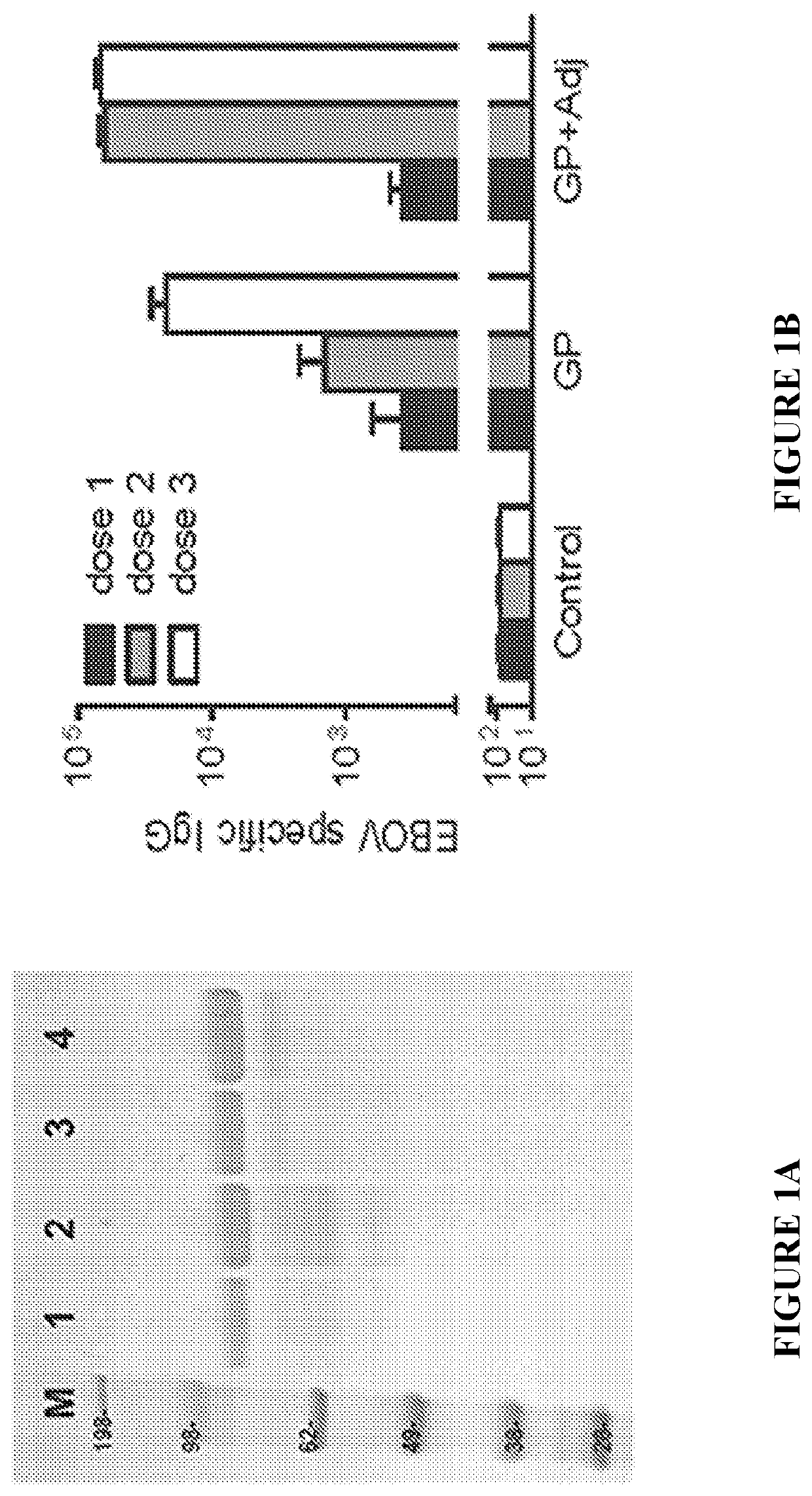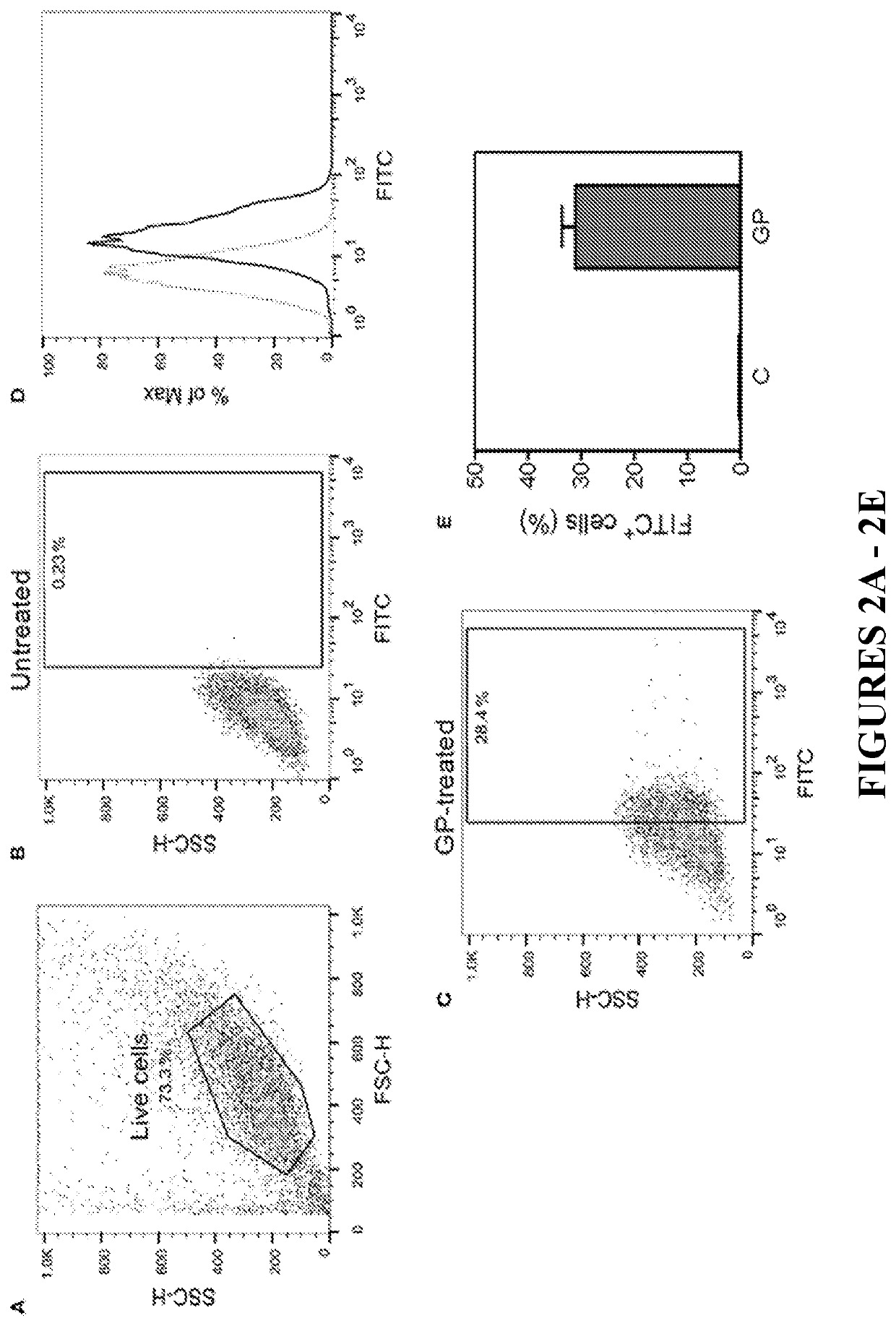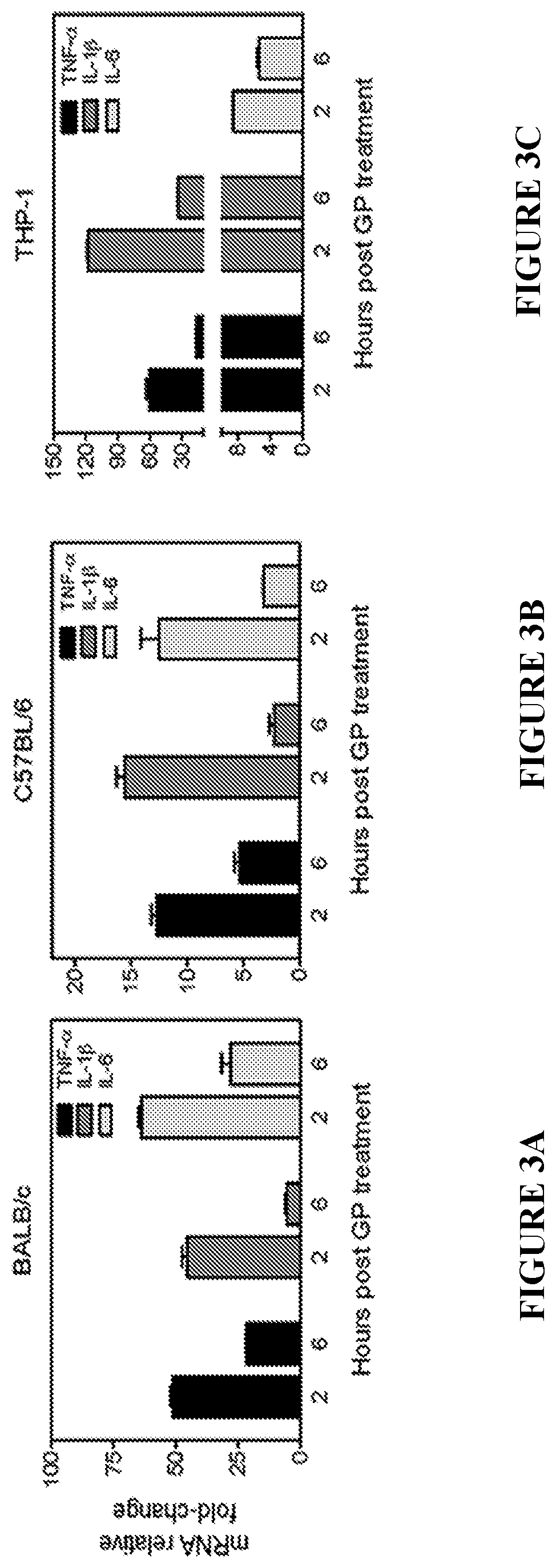Immune activation triggered by filovirus proteins and polypeptides
a technology of filovirus and polypeptides, applied in the field of immune activation, can solve the problems of inability to identify the correlates of protection in humans and animal models, inability to prevent or control future filovirus outbreaks, and inability to achieve immune activation, etc., to achieve the effect of most economic and effective, rapid decline of igm antibody, and demonstrated immunogenicity and efficacy
- Summary
- Abstract
- Description
- Claims
- Application Information
AI Technical Summary
Benefits of technology
Problems solved by technology
Method used
Image
Examples
example 1
[0079]The following describes studies demonstrating that Ebola virus glycoprotein induces an innate immune response in vivo via the TLR4 pathway.
[0080]The results from a recent human EBOV vaccine clinical trial in Guinea are encouraging and indicate that rVSV-ZEBOV is safe and highly efficacious in preventing EVD when delivered via a ring vaccination strategy during an outbreak. The results from the phase 3 vaccination trial using rVSV-ZEBOV showed that this vaccine induced protection as quickly as 6 days after administration even before robust IgG responses were generated. We thought that an adaptive response may not be the only way by which EBOV GP can confer protective immunity. Based on prior outbreak reports and recent clinical studies, it appears to us that the difference between EVD survivors and fatalities lies in the early immune responses elicited during the virus infection that may also explain protection in the recently used ring vaccination approach.
[0081]Both innate an...
example 2
[0108]We studied how Ebola virus glycoprotein enhances immune responses by activation of macrophages and dendritic cells.
[0109]Ebola virus (EBOV) structural glycoprotein (GP) is composed of GP1 and GP2 subunits which form a heterodimer that is connected by a single disulfide bond between GP1 and GP2 subunits. We have generated recombinant GP protein using the Drosophila S2 expression system and demonstrated purified recombinant GP elicits a robust innate immune response in the absence of adjuvants or other viral components both in vitro and in vivo. Antigen-presenting cells (APCs), dendritic cells (DCs) and macrophages, are central for both activation of innate immune responses and initiation of adaptive immunity. To further elucidate which subunit mostly contributes to the innate responses induced by GP, we tested the ability of EBOV GP subunits (separated by size-exclusion chromatography after reducing the disulfide bond) to trigger activation of APCs. Exposure of EBOV GP led to e...
example 3
[0110]Analysis of the glycosylation status of the GP antigen was conducted using enzymatic deglycosylation with analysis on protein gels. For GP, the PNGase treatment resulted in a protein which migrated faster on SDS-PAGE, consistent with the removal of the carbohydrate side chains from all N-linked glycosylation sites (FIG. 12). In contrast, no evidence was found for 0-linked glycosylation using the EDEGLY kit. Reduction of the GP protein results in separation of GP1 and GP2 fragments (FIG. 12) and confirms that the furin cleavage site is being processed completely during post-translational processing.
PUM
| Property | Measurement | Unit |
|---|---|---|
| pH | aaaaa | aaaaa |
| temperature | aaaaa | aaaaa |
| temperature | aaaaa | aaaaa |
Abstract
Description
Claims
Application Information
 Login to View More
Login to View More - R&D
- Intellectual Property
- Life Sciences
- Materials
- Tech Scout
- Unparalleled Data Quality
- Higher Quality Content
- 60% Fewer Hallucinations
Browse by: Latest US Patents, China's latest patents, Technical Efficacy Thesaurus, Application Domain, Technology Topic, Popular Technical Reports.
© 2025 PatSnap. All rights reserved.Legal|Privacy policy|Modern Slavery Act Transparency Statement|Sitemap|About US| Contact US: help@patsnap.com



